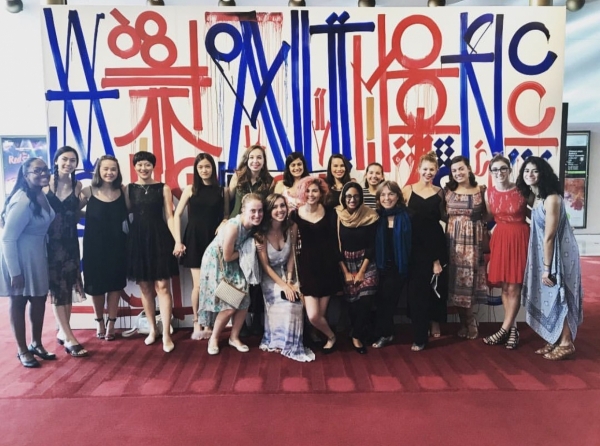Being able to view a professional performance in dress rehearsal was magical. There was something fascinating about witnessing a show in this form. I felt like I had the experience of viewing the opera from the side like a sedimentary rock with all of the various layers of the show revealed, or as if I were peering into a working machine with all of its moving parts on display revealing it’s function on the inside.
The individual musicians in the pit orchestra, the musical vision and guidance of the conductor, the partially costumed cast, the dancers, the unique visual art creating the set, the voice of the director giving notes to the cast, were all on view working together to create one performance.
Seeing the opera Aida in this form reminds me that the performers I was seeing on stage are real people, that many people came together to create that specific performance of the opera, and that we were all together (performers and audience) sharing in an experience.
One could say that various aspects of the show were abstract and not concrete or completely realistic or historically accurate representations of the time period and location of the story (which the opera had the liberty to do especially since Verdi, as we learned from the panel, had never been to Egypt).
Some abstract or historically inaccurate aspects of the show might have included the dancing, lighting, the costume design, and the sets.
For example, the dancing (a non concrete representation of the plot) was often incorporated within the singing and acting to help express the emotions of the characters. The lighting helped set the mood of the opera and convey the story (darkness when Aida felt despair, bright light in the opening of the story when war was approaching, the dying light to represent the death of Aida). The costumes, although not completely historically accurate were inspired by the region and time period in which the opera took place, and the sets were inspired by the writings and art found within Egypt.
Each of these pieces of the show were needed to help convey the story and to create a unique version of the opera. Without each of these aspects of the opera, the story would have been profoundly different in how it was received by the audience.
-Calista Ragland, IA&C, 2017-18
The WLP/IA&C attends a dress rehearsal of the opera Aida at the Kennedy Center
See what IAC student Calista Ragland had to say about her experience and the show.
October 2, 2017


